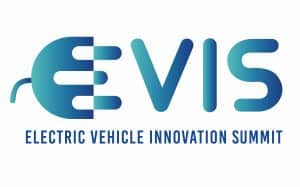
Until a few years ago, most mid-sized businesses gave little thought to how their accounting and payroll solutions were deployed. For the most part, they licensed their software and ran it on desktops or servers, renewing their licences and upgrading to new versions when necessary. Some may have vaguely heard of the cloud and software-as-a-service (SaaS) but didn’t give them serious consideration.
While some businesses were beginning to experiment with online customer relationship management (CRM) or backup solutions, few were thinking about entrusting their transactional system of record to the cloud. That picture has changed dramatically in recent years, and we see an accelerated move to the cloud.
In the early days of the cloud, many decision-makers worked hard analysing the pros and cons, particularly the security and reliability considerations. These have been addressed, and the move to cloud appears inevitable. As people and companies accept this trend, they stop looking at their options with a critical and questioning eye.
SaaS vs. cloud
Non-technical ERP end-users often don’t know the different deployment options or how they’re paid for. However, decision-makers need to understand the various options to maximise the benefits and choose the right one for their business. Let’s start with a basic definition of cloud and SaaS. Many use these two terms interchangeably, but there are some important nuances.
Cloud refers to access to computing, software, and data storage over a network, usually the internet. In the private cloud, the hardware and software resources are dedicated to a single customer. They may be hosted in a company’s own data centre or with a service provider. In the public cloud, the resources are managed by a third party and made available to anyone who uses or purchases them.
However, Software as a Service (SaaS) is precisely what the acronym implies, which is software delivered as an online service. You do not need to install it on your computer but instead access it online, usually through a web browser. Rather than buying a licence, you will typically pay an annual or monthly subscription to use the software. SaaS is, by definition, a cloud computing service, but not all cloud computing is SaaS.
Deployment options
Deployments can be categorised as follows:
- SaaS: is sofitware delivered only as a service, not on a drive or other media to be loaded on your own (or another party’s) computer.
- Third-party hosted: is software licensed by you, but you pay another party to manage and maintain (host) hardware and software.
- Hybrid: some parts are licensed and maintained on-site, and others (e.g. add-on modules) are SaaS.
- Hosted and managed by your ERP vendor: this is software licensed by you, but you pay your ERP vendor to manage and maintain (host) hardware and software.
SaaS becoming the model of choice
SaaS is becoming the preferred deployment option for mid-sized businesses because it helps them become more agile, productive and responsive. In addition to turning IT into an operational expense and reducing the cost of technology deployment, it vastly simplifies the IT environment. There is no longer a need for patching and updating software, and adding users is as easy as provisioning a login.
What’s more, the workforce gains the ability to access information on the go, from any location and a laptop or mobile device. This means people can capture data or access information without returning to the office. Costs – including consulting, implementation, and software upgrades over the solution’s lifecycle – are lower and easier to manage and understand. Companies looking to deploy a SaaS solution should start with a detailed business case that aligns with the company’s vision and objectives. Don’t focus only on the potential cost savings, but look at how it could improve agility, enable the business to reach new customers, transform the workforce, and streamline information security.












